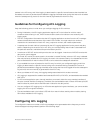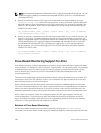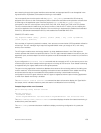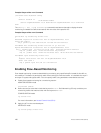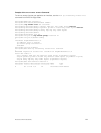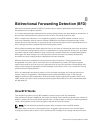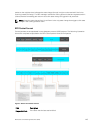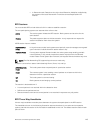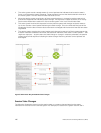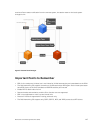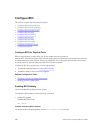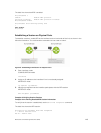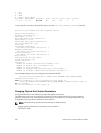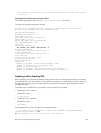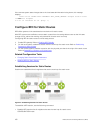
• In Demand mode: Detection time is the local Detection Multiplier multiplied by
the greater of the local Desired Min TX and the remote Required Min RX
Interval.
BFD Sessions
You must enable BFD on both sides of a link in order to establish a session.
The two participating systems can assume either of two roles:
Active The active system initiates the BFD session. Both systems can be active for the
same session.
Passive The passive system does not initiate a session. It only responds to a request for
session initialization from the active system.
A BFD session has two modes:
Asynchronous
mode
In Asynchronous mode, both systems send periodic control messages at an agreed
upon interval to indicate that their session status is Up.’
Demand mode If one system requests Demand mode, the other system stops sending periodic
control packets; it only sends a response to status inquiries from the Demand
mode initiator. Either system (but not both) can request Demand mode at any time.
NOTE: The Dell Networking OS supports Asynchronous mode only.
A session can have four states: Administratively Down, Down, Init, and Up.
Administratively
Down
The local system does not participate in a particular session.
Down The remote system is not sending control packets or at least not within the
detection time for a particular session.
Init The local system is communicating.
Up Both systems are exchanging control packets.
The session is declared down if:
• A control packet is not received within the detection time.
• Sufficient echo packets are lost.
• Demand mode is active and a control packet is not received in response to a poll packet.
BFD Three-Way Handshake
A three-way handshake must take place between the systems that participate in the BFD session.
The handshake shown in the following illustration assumes that there is one active and one passive
system, and that this session is the first session established on this link. The default session state on both
ports is Down.
Bidirectional Forwarding Detection (BFD)
145



